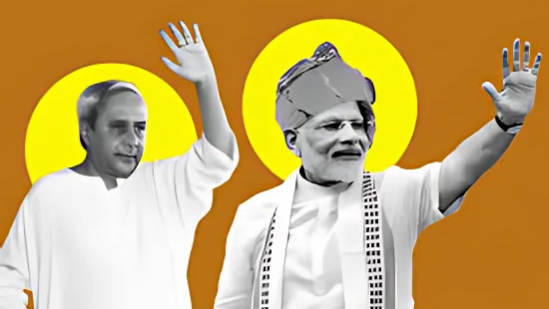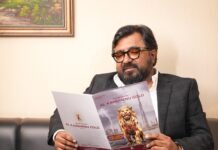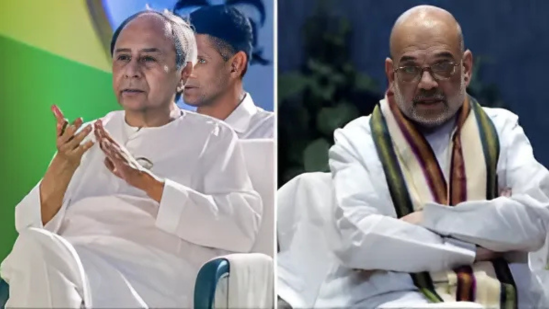
The political tension between the Biju Janata Dal (BJD) and the Bharatiya Janata Party (BJP) is rising in Odisha after a sharp drop in central government grants to the state. The BJD has questioned the effectiveness of BJP’s much-promoted “double-engine” governance model, which claims faster development when the same party governs both the Centre and the state. However, the BJD argues that this model is not working in Odisha, especially when the financial support from the central government has decreased significantly.
As per official data, Odisha received ₹19,600 crore less in central grants during the 15th Finance Commission period (2020–2025) compared to the 14th Finance Commission period (2015–2020). The BJD says that this huge reduction has hurt key welfare schemes, infrastructure development, disaster relief, and other important sectors in the state. The party also pointed out that Odisha contributes a large amount to the central revenue through minerals and industries, yet the state is not being supported enough in return.
Senior leaders from the BJD have openly criticized the BJP, saying that if the double-engine model is supposed to bring faster growth, then Odisha should be receiving more, not less. One BJD leader stated that slogans like “double engine sarkar” are being used only for election campaigns, while the reality is that the state is being neglected by the Centre. They argued that the BJP is not treating Odisha fairly when it comes to financial distribution.
The Finance Commission’s new formula for distributing funds is one of the main concerns. According to the BJD, this new method has significantly reduced Odisha’s share in many areas such as rural development, health, education, and disaster response. Odisha is a state that regularly faces natural disasters like cyclones and floods, and the BJD believes the state should receive more support, not less. They have accused the Centre of being unfair and biased in its financial policies.
To understand the political conflict better, it is important to know what the double-engine governance model means. This model is often used by BJP leaders to suggest that when both the Centre and the state are governed by the BJP, there is better coordination and faster development. They claim that states like Gujarat, Uttar Pradesh, and Assam have benefited from this model. However, in Odisha, where the BJD remains in power, the party argues that the model does not help states that are not ruled by the BJP.
Chief Minister Naveen Patnaik has not directly spoken on the issue yet, but his party’s statements and actions clearly show that the BJD is not happy with the Centre’s treatment of Odisha. Even though the BJD has supported the central government on various national matters, it has always kept an independent stand and has not officially joined the BJP-led alliance.
On the other side, the BJP has defended its actions strongly. BJP leaders claim that the central government has launched several beneficial schemes in Odisha, such as the PM Awas Yojana for housing, the Jal Jeevan Mission for drinking water supply, and Ayushman Bharat for health insurance. They also pointed out that the Centre has funded major infrastructure projects like highways, airports, and railways. A BJP spokesperson stated that the BJD is spreading misinformation for political gain and that the central government has done more for Odisha than ever before.
Despite these claims, many experts and opposition leaders argue that while the schemes sound good on paper, the actual funds released by the Centre are lower than what was promised. This is why the BJD continues to press the issue and questions whether Odisha is truly benefitting from the so-called double-engine government model.
Political experts believe that this issue is becoming heated mainly because both Lok Sabha and Odisha Assembly elections are approaching. The BJD is trying to protect its position in the state by showing how the BJP has failed to support Odisha. Meanwhile, the BJP is trying to grow its influence and possibly win power in the state. Therefore, both parties are using this topic to gain public support and blame each other.
Even with reduced central grants, Odisha has managed to do well in many areas. The BJD-led state government has implemented several successful welfare programs, such as Biju Swasthya Kalyan Yojana (BSKY) for free healthcare, affordable housing for the poor, and empowerment schemes for women and youth. The BJD says that these achievements show that it is the state government that is driving development, not the Centre.
Public opinion in Odisha is mixed. Some people believe that the central government is not giving the state its due share. Others feel the state government should manage its funds more efficiently. However, many people still trust Naveen Patnaik for providing peace, stability, and development over the last two decades. At the same time, the BJP is slowly gaining popularity, especially among the youth and in urban areas, by promising faster progress and stronger national ties.
The upcoming 2024 elections will be very important for both parties. The BJD wants to continue its rule in the state and protect its regional model of governance. The BJP wants to prove that its double-engine model works and that Odisha can develop faster under a BJP-led state government. The recent drop in central funds and the fight over the double-engine model will likely become a major issue in campaign speeches and political rallies.
The BJD’s sharp criticism of the BJP’s double-engine model has opened up a major political debate in Odisha. The drop in central grants has become a symbol of larger issues between the state and the Centre. While the BJP continues to defend its policies, the BJD is using the moment to show that Odisha is being treated unfairly. As the elections draw closer, this issue may become a key deciding factor for voters in the state. Whether the people of Odisha choose to believe in the BJD’s regional strength or the BJP’s national model, the coming months will shape the political future of the state.































